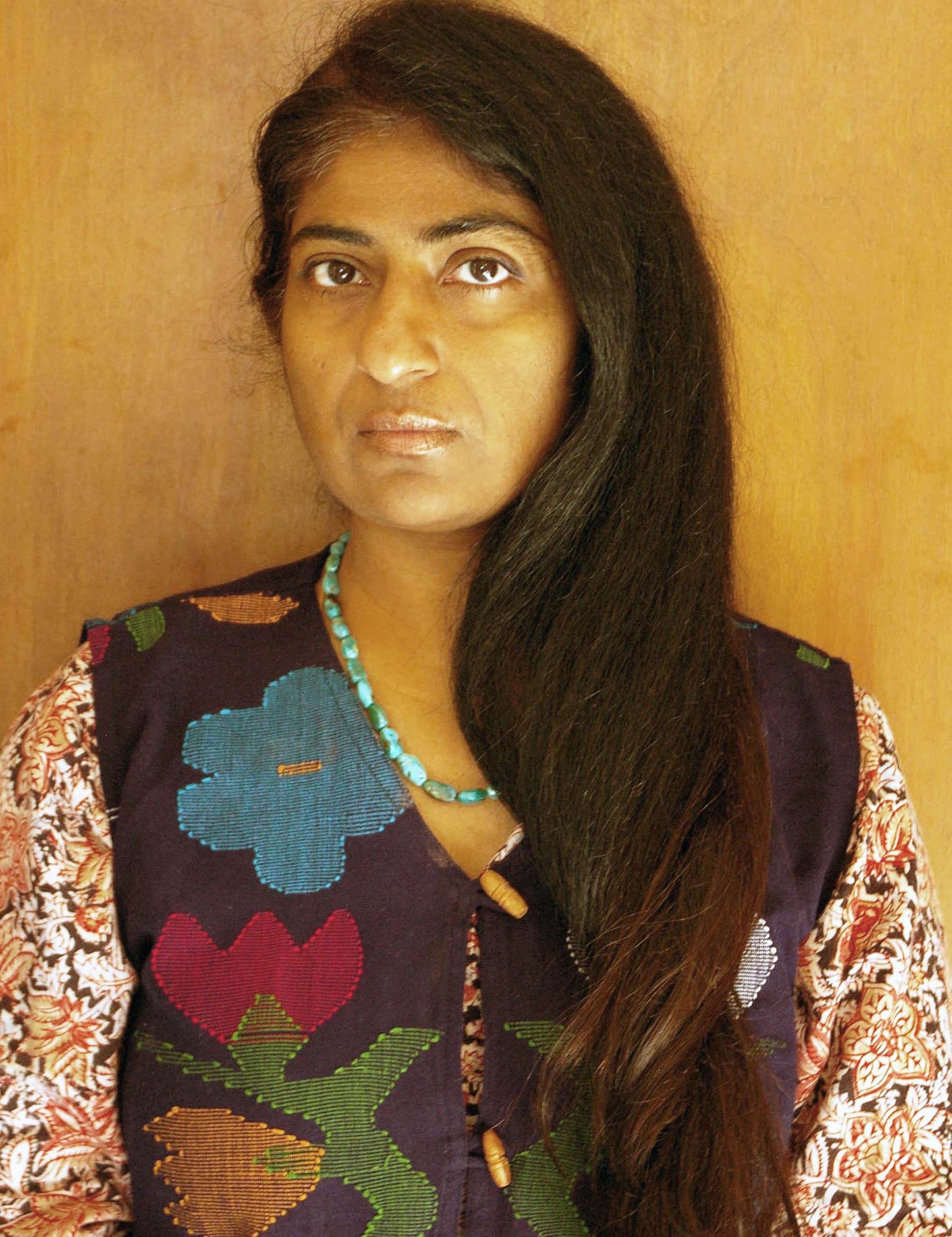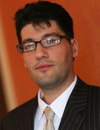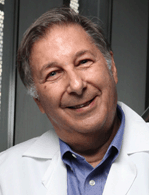
Tuesday, 1 November 201608:00 | Conference Registration, Conference Materials Pick-Up, Morning Coffee and Breakfast Pastries in the Exhibit Hall | |
Session Title: Emerging Themes in the Cancer Immunotherapy Space |
| | |
Conference Chairperson: Leonora Balaj, Ph.D., Massachusetts General Hospital (MGH)/Harvard Medical School |
| | 09:00 |  | Keynote Presentation PD-1 Cancer Immunotherapy
Gordon Freeman, Professor of Medicine, Dana-Farber Cancer Institute, Harvard Medical School, United States of America
PD-1 immunotherapy works |
| 09:30 |  | Keynote Presentation Inflammatory T cell Responses in Glioblastoma
David Hafler, William S. and Lois Stiles Edgerly Professor of Neurology and Professor of Immunobiology, Yale University, United States of America
|
| 10:00 |  | Keynote Presentation Oncolytics: Genes and Viruses as Immunotherapies
E Antonio Chiocca, Professor and Chairman, Department of Neurosurgery, Brigham and Women's Hospital/Harvard Medical School, United States of America
There are various types of immunotherapy for malignant tumors, such as glioblastoma. I plan to discuss the use of genetically engineered viruses to deliver cytotoxic, immuno-stimulatory genes into tumors. Two main types of viruses are used in this technology: [1]. Replication-defective vectors, where viral genes have been removed and thus there is no expression of viral genes or generation of progeny viruses, but there is expression of an immuno-stimulatory and/or cytotoxic gene, and [2]. Tumor replication-selective viruses (Oncolytic Viruses, OVs) where a viral pathogen is engineered so that its pathogenicity is now targeted to tumor and not normal cells. It is now recognized that the presence of viral genes and viral proteins in both of these technologies can elicit powerful anticancer immune responses which are a major component of efficacy. |
| 10:30 | Coffee Break and Networking | 11:15 |  | Keynote Presentation Functions of Innate Cytokines and Cells in Immune Responses to Viral Infections
Christine Biron, Esther Elizabeth Brintzenhoff Professor of Medical Science, Professor of Molecular Microbiology and Immunology, Brown University, United States of America
|
| 11:45 |  | Keynote Presentation The Role of Liquid Biopsies in Immunotherapy Selection and Monitoring
Paul Song, Chief Medical Officer, Cynvenio Biosystems, United States of America
This discussion highlights how liquid biopsy may better identify optimal timing of immunotherapy as well as serve as a way to monitor response. |
| 12:15 |  | Keynote Presentation FDA Evaluation of Liquid Biopsy Devices
Abraham Tzou, Medical Officer, Food and Drug Administration (FDA/CDRH), United States of America
This presentation covers FDA evaluation of liquid biopsy devices and issues for diagnostic development. |
| 12:45 | Networking Lunch | |
Session Title: The Emerging Role of Liquid Biopsies for Cancer Monitoring |
| | 14:00 |  | Keynote Presentation Circulating Tumor DNA in Advanced-Stage Cancer Patients – Somatic Genomic Landscape and its Clinical Utility
AmirAli Talasaz, Co-Founder, President & COO, Guardant Health, United States of America
Next-generation sequencing (NGS) of circulating tumor DNA (ctDNA) enables non-invasive profiling of solid tumor cancers. Liquid biopsy studies to date have been limited to modest-size cohorts and case studies. Somatic genomic profiles of over 15,000 patients with advanced-stage clinical cancer were determined by a highly accurate, deep-coverage ctDNA NGS test targeting 70 genes (Guardant360). Frequencies of somatic ctDNA alterations per gene were compared to those previously described in tissue sequencing projects (e.g., TCGA). Accuracy of ctDNA sequencing (PPV) was assessed by comparing with matched tissue tests. Different classes of clinical outcome benefits have been observed by liquid biopsy by detecting actionable mutations in cases with tissue QNS or actionable mutations emerging at time of progression or under-genotyped tumors. |
| 14:30 |  | Keynote Presentation Liquid Biopsies in Cancer Disease Management
Ellen Beasley, Senior Vice President, Genomic Health Inc, United States of America
Liquid biopsies can be used to monitor tumor dynamics including recurrence or to profile individual genetic and genomic markers that are informative of treatment options. Together, these complementary approaches provide precision solutions to help manage disease along the patient cancer journey. These also call for different development, analytical and clinical validation strategies, as well as demonstration of clinical utility. As these assays become more routine and move toward standard of care, it will be important to provide accurate and relevant test performance information. I will discuss the role of standards to ensure quality and allow appropriate interpretation of test results. |
| 15:00 |  | Keynote Presentation The Role of the Pathologist in the Measurement of Circulating Tumor Cells (CTCs): A Pathologist's Perspective (CTCs)
Malini Harigopal, Associate Professor, Dept of Pathology, Breast and Cytopathology, Yale University, United States of America
The use of Circulating Tumor Cells (CTCs) is a rapidly growing new diagnostic test to help manage oncology patients. The test is being done at different institutions, even though it requires morphologic skills highly similar to those of the cytopathologist. The dramatic reduction in Pap smear specimens due to molecular technologies leaves potential capacity in the cytopathology lab. Thus, CTC analysis is an ideal new test to introduce into the cytopathology practice. After many years of basic research for assessment of circulating tumor cells (CTCs), there is now an FDA approved method available for use in clinical labs. The CellSearch System (Veridex) requires morphology skills highly similar to those of the cytopathologist to enumerate CTCs. The cytopathology lab is a natural location for this technology in the healthcare delivery system. The cytotechnologist under the supervision of the pathologist is involved in the final interpretation and enumeration of CTC. Molecular characterization of CTC provides additional prognostic information. |
| 15:30 | Coffee Break and Networking | 16:00 |  | Keynote Presentation Applications of Plasma Genotyping for Advanced Non-Small Cell Lung Cancer
Cloud Paweletz, Head of the Translational Research Laboratory, Dana Farber Cancer Institute, United States of America
Through collaboration between thoracic oncologists and biomarker scientists at DFCI, we have spent the recent years developing approaches for targeted genotyping of plasma cell-free DNA in advanced NSCLC. Our approach primarily focuses on rapid assays for clinical application, including droplet digital PCR and targeted NGS assays. We will review our approach to clinical validation and present ongoing clinical investigations using these assays to study response and resistance to targeted therapies. |
| 16:30 | Development of Next Generation Sequencing Biomarker Assays and Analysis Pipelines for Cancer Immunotherapy
Brian Dougherty, Executive Director, Translational Genomics, Oncology IMED, AstraZeneca R&D, United States of America
Immunotherapies for cancer treatment are being developed using antibody, small molecule, and anti-sense modalities. Next Generation Sequencing analysis pipelines have been modified for immunotherapy biomarker assays to include methods for HLA typing, somatic neoantigen presentation, mutational burden, T-cell receptor re-arrangement, and differential gene expression analysis. | 17:00 | Immuno-Oncology Trial Monitoring Directly From Whole Blood or Tissue with qPCR-Assisted Cell Counting (qPACC)
Thomas-Oliver Kleen, Executive VP Immune Monitoring, Epiontis GmbH, Germany
Novel immunotherapy agents like anti-CTLA-4 and anti-PD1/PD-L1 have made immune monitoring in clinical trials a vital part based on the mechanism of action of these drugs. Monitoring both systemic changes in the blood and intra-tumoral changes of relevant leukocyte sub-populations aids the development of early surrogate markers of therapy success or warning signs of increased inflammatory processes or autoimmunity. Epigenetic based, quantitative real-time PCR assisted cell counting (qPACC) performed under ISO 17025 allows precise and robust quantification of immune cells in all human samples from only small amounts of blood or tissue. Samples can be simply frozen and easily shipped, leading to less costly logistics, far less sample requirements, and no need for viability and/or stability of cells as required for Flow cytometry and ELISPOT. This allows the unprecedented capability to monitor patients Immuno-oncology trials with regulatory T cells (Tregs), Th17 cells, Tfh cells, CD4+ and CD8+ cells, overall T cells (CD3+), B cells, NK cells (CD56 dim), neutrophil granulocytes and monocytes are the first examples of a next generation of Immuno-oncology biomarker tools that can be used in these settings. | 17:30 | Blood-based Assay for Diagnosis and Follow-up Care of Brain Tumors
Leonora Balaj, Instructor in Neurosurgery, Mass General Hospital (MGH)/Harvard Medical School, United States of America
Tumor cells release extracellular vesicle (EVs) that end up in many biofluids and can be isolated and analyzed. They contain important information about the tumor, and can inform the clinician about the status of the tumor through a blood samples without the need for a biopsy. EVs are easily accessible through the blood as well as CSF and can be monitored over the course of a disease treatment. We have analyzed samples from glioma patients at diagnosis as well as patients that have failed standard treatment and have enrolled in clinical trials. Samples collected at diagnosis as well at later time points have been analyzed to determine the baseline status of the tumor, as well as changes that happen to the tumor over time. The presentation will focus on a variety of blood-based assay developed for mutation detection as well as EV RNA profiling. | 18:00 |  | Keynote Presentation Cancer Immunotherapy: Past, Present and Future — The Picture from Wall Street Analyst Perspective
Konstantinos Aprilakis, Biotechnology Equity Research, JMP Securities, LLC, United States of America
|
| 18:30 | Cocktail Reception for All Conference Attendees: Enjoy Beer, Wine, Appetizers and Network with Fellow Delegates | 19:30 | Close of Day 1 of the Conference. |
Wednesday, 2 November 201607:30 | Morning Coffee, Breakfast Pastries and Networking in the Exhibit Hall | 08:00 |  | Keynote Presentation Multiplex Real-time PCR Assays that Measure the Abundance of Extremely Rare Mutations Associated with Cancer
Fred Kramer, Professor of Microbiology, Biochemistry & Molecular Genetics, New Jersey Medical School Rutgers University, United States of America
Real-time multiplex PCR assays are potentially the most rapid, most sensitive, and least expensive way to assess the abundance of mutant DNA fragments present in liquid biopsies; provided that a way is found to selectively amplify these rare mutant fragments without amplifying the abundant wild-type fragments; and provided that the amplicons generated from different mutants are prevented from forming heteroduplexes that interfere with exponential amplification, obscuring the threshold values of the rarer mutants. “SuperSelective” PCR primers, due to their unique design, are extraordinarily specific, able to selectively initiate the synthesis of amplicons on ten mutant DNA fragments in the presence of 1,000,000 wild-type DNA fragments, even though the only difference between the mutant and the wild-type is a single-nucleotide polymorphism. Moreover, each SuperSelective primer specific for a particular mutation possesses a unique 5’ tag sequence that is incorporated into the resulting amplicons and detected in real-time by differently colored molecular beacon probes. Each SuperSelective primer specific for a particular mutation also possesses an additional unique “bridge” sequence that assures that each primer only copies its intended amplicon, and that creates a single-stranded bubble in heteroduplexes that enables the rarest amplicons to be independently exponentially amplified. And finally, the inclusion of primers for a wild-type reference gene fragment, enables the abundance of each type of mutant DNA fragment to be assessed (without measuring the amount of DNA in the sample) by determining the difference between its threshold value and the threshold value of the reference gene. |
| |
Session Title: How Liquid Biopsies and Immunotherapy for Cancer are Key Components of Cancer Precision Medicine |
| | 09:00 |  | Keynote Presentation Phenotypic Profiling of Circulating Tumor Cells
Shana Kelley, Professor, University of Toronto, Canada
The circulating tumor cells present in the bloodstream of an individual patient may possess varied phenotypes linked to their metastatic potential. We are developing a suite of technologies that not only enumerate CTCs, but also profile their phenotypic profiles at the single cell level. The application of these technologies to animal models of cancer and patient samples will be discussed. |
| 09:30 | Insights into Immune Checkpoint Blockade Biology in EGFR-Driven Mouse Models of Glioblastoma
Alain Charest, Associate Professor, Beth Israel Deaconess Medical Center, Cancer Research Institute, Department of Medicine, Harvard Medical School, United States of America
Glioblastoma Multiforme (GBM) is a lethal disease with a median survival of approximately 15 months and a 5-year relative survival rate of 3%, despite an aggressive standard of care treatment regimen consisting of fractionated radiation and the chemotherapeutic agent Temozolomide (TMZ). This abysmal lack of response makes it clear that alternative therapeutic approaches must be explored. Phenomenal advances have been made in characterizing the molecular features of GBM through the cataloging of genomic data obtained through the efforts of The Cancer Genome Atlas. Despite these tumor-cell centric advancements, much less is known about how the tumor microenvironment plays a role in the maintenance, evolution, and response to therapies for GBMs. The adaptive immune system is endowed with intrinsic anti-tumor activity. However, many malignant tumors, including GBM, are associated with significant systemic and micro-environmental immunosuppression. Often, tumors escape immune surveillance by over-expressing a class of proteins known as immune checkpoints, resulting in uncontrolled growth of the tumors. Antibody-mediated inhibition of two immune checkpoint cell surface proteins (programmed death-1 [PD-1] and cytotoxic T-lymphocyte antigen-4 [CTLA-4]), has exhibited dramatic and durable responses across a spectrum of malignancies. However, the clinical potential of these antibodies in patients with GBM is not known. Here we systematically evaluated the antitumor efficacy of antibodies targeting the immune checkpoint molecules PD-1 and CTLA-4 when administered as single-agent therapies and in combination with (XRT-TMZ) in an EGFR-driven genetically engineered immunocompetent mouse model of GBM. Treatment with anti PD-1 and anti CTLA-4 antibodies resulted in a significant increase in survival when compared to either control untreated animals and XRT-TMZ treated mice. Our results support the clinical evaluation of immune checkpoint blockade as single agents. | 10:00 |  | Keynote Presentation The Architecturally Dynamic Genetic and Epigenetic Landscape of Cancer Biology and Pathology
Gary S Stein, Professor and Chairperson, Department of Biochemistry, Director, University of Vermont Cancer Center, United States of America
Fidelity of genetic and epigenetic regulation are required for biological control and are compromised in cancer. Strategies for mechanistically defining the assembly and organization of regulatory machinery for genomic and epigenetic parameters of gene expression in nuclear microenvironments will be explored. Oncofetal epigenetic control, the recapitulation of embryonic bivalent histone modifications in early stage breast cancer and prostate cancer will be presented, within the context of cancer detection and targeted therapy. |
| 10:30 | Coffee Break and Networking | 11:00 | Immunosuppression and the Anti-Tumor T cell Response in Natural Tumor Microenvironments
Nikhil Joshi, Assistant Professor of Immunobiology, Yale University, United States of America
Immunosuppressive regulatory T cells (Tregs) infiltrate many tumor types, and often this infiltration correlates with poor outcomes for patients. Most investigations of Treg function have focused on lymph nodes (LNs), where Tregs have many functions and suppress responses by many other immune cell types. For much of this regulation, the organized structure of the lymphoid tissue is critical, as Tregs must interact with cells to exert regulation. In the tumor microenvironment (TME) associated with established solid tumors in peripheral organs, like lung cancer however, it is less clear how Tregs regulate other cell types. Our laboratory uses immunocompetent, autochthonous genetically engineered mouse models to investigate Treg function in tumors. | 11:30 | Dissecting Mechanisms of PD-1 Blockade with Massively Parallel Single-Cell RNA-Sequencing
Brian Miller, Oncology Fellow, Dana-Farber Cancer Institute, United States of America
Anti-PD-1 antibodies are currently the most broadly applicable immunotherapy available for patients. However, even for the most sensitive cancers, less than 40% of patients respond to this therapy. Despite its clinical utility, the mechanisms of action of anti-PD-1 treatment are not fully known, limiting the rational design of combination therapies to increase its efficacy. The goal of my research is to understand the mechanisms by which anti-PD-1 therapy augments the anti-tumor immune response. We have developed a novel technology in massively parallel single-cell RNA-sequencing to interrogate the immune response to cancer. Using this technology, we can measure the expression of thousands of genes in hundreds to thousands of individual cells. This allows us to obtain a comprehensive understanding of the immune response to cancer by examining in great detail both common and rare cell types in the tumor microenvironment. We are studying how anti-PD-1 therapy alters populations of cells and their activation within the tumor microenvironment. | 12:00 |  | Keynote Presentation Exosomes, Advancing Liquid Biopsy Diagnostics
Johan Skog, Chief Scientific Officer, Exosome Diagnostics Inc, United States of America
The field of liquid biopsy has gained enormous interest in recent years. An important goal of personalized medicine has been being able to detect tumor derived genetic profiles and tracking the evolution of tumor mutations over time. Utilizing cell free tumor DNA (ctDNA) for detection of mutations in plasma has shown some promise in late stage cancer patients, but can only be used to track genetic changes. A more complete picture can be seen by combining the mutations in ctDNA with the mutations and RNA profiles from exosomes. We have validated and launched the world’s first clinical tests using exosomal RNA (exoRNA). We have also developed a single step isolation platform for exoRNA and ctDNA from biofluids, which increases the available mutant copies from the tumor available for analysis. In a blinded head to head analysis, this platform had better sensitivity when compared to ctDNA alone. Exosomes are especially interesting because they are released as an active process from not only cancer cells, but also other cells, such as tumor stroma and immune cells. This enables us to access RNA profiles when monitoring response to more complex processes, such as immunotherapy response, where monitoring mutations may not be sufficient. |
| 12:30 | Networking Lunch | |
Session Title: Emerging Approaches in the Cancer Immunotherapy and Liquid Biopsies Spaces |
| | 13:30 |  | Keynote Presentation Tumor Mutational Burden as a Biomarker for Immunotherapy – Clinical Feasibility in NSCLC, Melanoma and Advanced Urothelial Carcinoma
David Fabrizio, Leader, Cancer Immunotherapy, Foundation Medicine, United States of America
Biomarkers capable of predicting response to checkpoint inhibitor therapies represent a significant clinical need. Increased tumor neo-antigenic burden has been linked to PD1/PD-L1 therapeutic response in several conditions including metastatic melanoma, non-small cell lung carcinoma and microsatellite instable (MSI-H) colorectal cancer (CRC). However, the challenges and high cost associated with neo-antigen discovery has shifted focus towards more efficient methods of response stratification. As such, tumor mutational burden (TMB) determination from comprehensive genomic profiling (CGP) has emerged as a potential solution. Herein, we demonstrate the clinical utility of TMB for predicting response to checkpoint inhibitor blockade across three indications including NSCLC, metastatic melanoma and advanced urothelial carcinoma using the Foundation One platform. |
| 14:00 |  | Keynote Presentation Detection of Tumor-specific Mutations in Circulating, Cell-free DNA: Potential for a Biomarker in Esophageal Adenocarcinoma
Tony Godfrey, Associate Chair – Research, Department of Surgery, Boston University Medical Center, United States of America
Recent studies have shown that tumor-specific DNA from multiple types of tumors can be detected circulating in plasma and this has raised the possibility of “liquid biopsies” using mutated tumor DNA as a potential diagnostic and prognostic biomarker. Detection of mutations with allele frequencies below 0.1% remains challenging however given that circulating cell-free DNA is highly degraded and in low abundance. Detection of multiple different mutations in the same sample presents an additional challenge particularly when the mutation panel may change from patient to patient. We have developed a novel approach, called SimSen-Seq, to introduce molecular barcodes into sequencing libraries with DNA inputs as low as 5ng. Barcodes enable differentiation of true mutants from background noise introduced by Taq polymerase errors and permits detection of variant alleles with frequencies below 0.1%. The barcodes are protected from mis-priming using a hairpin structure which permits a high degree of multiplexing and flexibility for detection of multiple mutations from one plasma sample. We are using this technology to test the utility of liquid biopsy as a biomarker for esophageal adenocarcinoma (EAC) diagnosis and disease monitoring. |
| 14:30 | Safety Evaluation of Biotechnology-derived Immuno-Oncology Therapies, Considerations in Species Selection for Pre-Clinical Testing
Stephen Kirk, Non-Clinical Immunotoxicologist, Covance Laboratories Ltd, United Kingdom
Regulatory guidance requires pre-clinical evaluation of immuno-oncology therapies prior to first in human (FIH) trials. Evaluation of such drug candidates can pose many challenges when the compound is a biotechnology based product. Often biotech products are highly specific for human targets and bind the equivalent target in pre-clinical species with much lower affinity or the presence of the target in healthy pre-clinical toxicology species is expressed at much lower levels, or is absent, when compared to the disease state in humans. The intended pharmacological activity of the therapy, such as immuno-stimulation for check-point inhibitors, is only observed when the target is present above certain levels, making exaggerated pharmacology difficult to evaluate in the pre-clinical space. This presentation looks at the challenges of selecting suitable species for pre-clinical evaluation, covering topics such as the use of transgenic mouse models, homologues versus the human drug candidate, overcoming anti-drug antibody challenges and supplementation of in vivo work with in vitro / ex vivo cell based assays.
| 15:00 | CX3CR1 Distinguishes Three Distinct Migratory Memory CD8 T-cell Subsets
Carmen Gerlach, Researcher, Harvard Medical School, United States of America
CD8+ T cells are crucial for the protection against tumors and intra-cellular pathogens via their ability to generate long-term memory. Memory T cells are however not a homogeneous population. Traditionally, they have been sub-divided into central memory (TCM), effector memory (TEM) and tissue-resident memory (TRM) cells based on different migration behaviors and cytotoxic potential.
We recently discovered the existence of a novel subset of memory CD8+ T cells that has unique migratory properties and a superior homeostatic self-renewal capacity. It is tempting to speculate that this subset may be an interesting population in the context of vaccination or adoptive T cell therapy.
| 15:30 | Targeting Immunotherapy to the Tumor Microenvironment
Stephanie Dougan, Assistant Professor, Dana-Farber Cancer Institute, United States of America
| 16:00 | The Generation of Tumor-Associated T Regulatory Cells Critically Depends on Calcineurin
Francesco Marangoni, Instructor in Medicine, Massachusetts General Hospital/Harvard Medical School, United States of America
CD4+FoxP3+ T regulatory cells (Tregs)
play a key role maintaining immune homeostasis, yet they are also
improperly co-opted by tumors where they blunt anti-tumor immunity and
facilitate progression. Treg function is maintained in vivo by
continuous triggering of the T cell receptor (TCR), yet it is unknown
how interactions between Tregs and APCs in the context of
tumor development dynamically trigger the TCR and the numerous signaling
pathways downstream of it. Among these, the role of the calcineurin /
NFAT pathway in Treg biology is controversial. We thus investigated the role of calcineurin / NFAT signaling in supporting tumor-associated Treg (TuTreg)
generation and function by using mice with Treg-specific deletion of
calcineurin B (CnB) and intravital imaging of NFAT activation.
| 16:30 | Hypercholesterolemia Increases Colon Cancer Risk by a Tet1-dependent Reduction of Hematopoietic Stem Cell differentiation towards NKT and ?dT cells: Potential Novel Immunotherapy
Louis Messina, Professor and Chief Division od Vascular and Endovascular Surgery, Vice Chair Department of Surgery, University of Massachusetts Medical School, United States of America
Obesity will soon surpass smoking as the most preventable cause of cancer. Hypercholesterolemia, a common comorbidity in obese people, has been shown to increase cancer risk, especially colorectal cancer. However, the mechanism by which hypercholesterolemia, or any metabolic disorder, increases cancer risk remains unknown. In this study, we show that hypercholesterolemia increases the incidence and pathological severity of colorectal neoplasia in two independent mouse models by inducing an oxidant-stress dependent increase in miR101c that downregulates Tet1 in hematopoietic stem cells (HSCs) which in turn reduces the expression of genes critical to natural killer T cell (NKT) and ?dT cell differentiation. These effects reduce the number and function of terminally differentiated NKT and ??T cells in the thymus, the colon submucosa and during early tumorigenesis. These results suggest a new mechanism by which a metabolic disorder induces epigenetic mechanisms that reduce lineage priming of HSCs towards immune cells and thereby compromises immunosurveillance against cancer. | 17:00 | Coffee and Refreshment Break | 17:30 | Therapeutic Effects of anti-LAP Antibody in Different Cancer Models
Galina Gabriely, Instructor, Department of Neurology, Ann Romney Center for Neurologic Diseases, Brigham and Women's Hospital, United States of America
A major advance in the treatment of cancer has been the development of immunotherapy that acts by counteracting the suppressive environment established by the tumor. Although it is known that regulatory T cells contribute to cancer immune suppression, there are few surface molecules on Tregs that can specifically be targeted for the treatment of cancer. We identified a novel Treg population characterized by the expression of surface latency-associated peptide (LAP) which is a regulator of TGF-ß, a potent immunosuppressive cytokine. An increase in LAP+CD4+ T cells has been reported in human cancer, including head and neck and colorectal cancer. To study the regulatory role of LAP+CD4+ T cells in mouse models of cancer we developed a murine monoclonal anti-LAP antibody. We found that treatment with anti-LAP reduces tumor growth and increases survival in various cancer models, including colon carcinoma, glioblastoma and melanoma. Anti-LAP antibody is able to block TGF-ß release from cells expressing LAP and also reduces both the number and suppressive abilities of tumor-associated LAP+CD4+ regulatory T cells. Anti-LAP treatment triggers a profound peripheral immune response by acting on both innate and adaptive parts of the immune system. These changes are associated with an increased infiltration of cytotoxic CD8+ T lymphocytes into tumors. Based on the TCGA data analysis, the expression of LAP-associated genes correlates inversely with patient survival in a number of cancers that include, among others, glioblastoma, colon carcinoma and melanoma. In conclusion, anti-LAP antibody as a monotherapy or combined with conventional anti-tumor modalities represents a novel immunotherapeutic approach for cancer treatment. | 18:00 | NK Cells as Regulators of Viruses, Tumors, and the Immune Response
Raymond Welsh, Professor Emeritus, University of Massachusetts Medical School, United States of America
Dr. Welsh will describe his historical work showing how NK cells are activated and control viral infections and present newer work showing how they control virus-induced tumors and how the tumors escape from NK cell surveillance. Further, he will show how NK cells regulate adaptive immunity by lysing CD4 T cells.
| 18:30 | Close of Day 2 of the Conference. |
|

 Add to Calendar ▼2016-11-01 00:00:002016-11-02 00:00:00Europe/LondonCancer Immunotherapy and Biofluid Biopsies 2016Cancer Immunotherapy and Biofluid Biopsies 2016 in Boston, USABoston, USASELECTBIOenquiries@selectbiosciences.com
Add to Calendar ▼2016-11-01 00:00:002016-11-02 00:00:00Europe/LondonCancer Immunotherapy and Biofluid Biopsies 2016Cancer Immunotherapy and Biofluid Biopsies 2016 in Boston, USABoston, USASELECTBIOenquiries@selectbiosciences.com